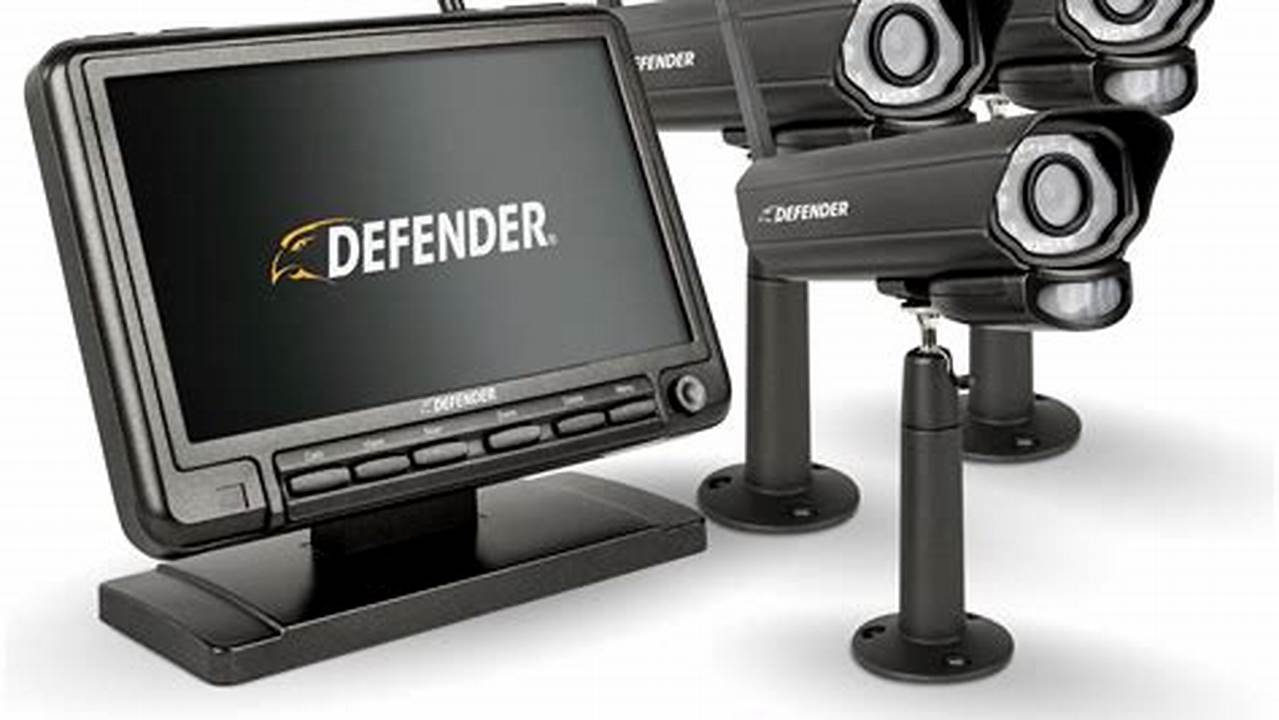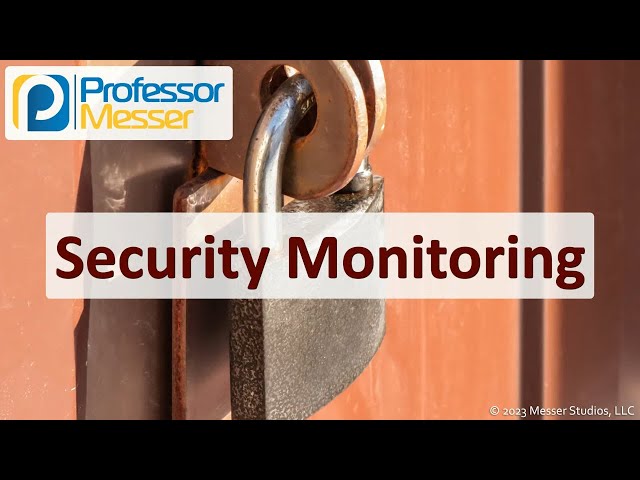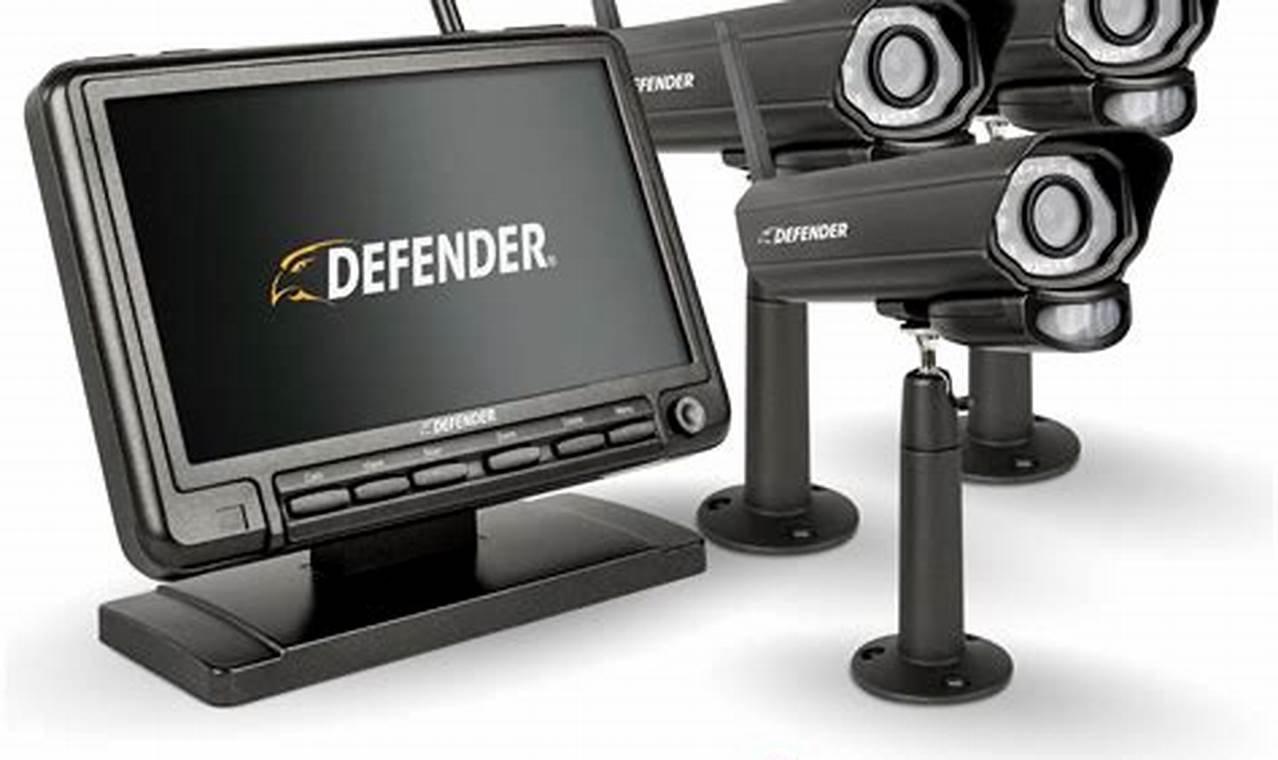
Security monitoring involves the continual oversight and analysis of security systems and logs to identify potential threats and suspicious activities. It plays a crucial role in safeguarding critical data and assets, ensuring compliance, and maintaining business continuity.
Security monitoring encompasses various techniques and tools, including intrusion detection systems (IDS), security information and event management (SIEM), and log analysis. These systems collect and analyze data from various sources, such as network traffic, operating systems, and applications, to detect anomalies and potential security incidents. By promptly identifying and responding to security threats, organizations can minimize the impact of breaches and protect their sensitive information.
In today’s rapidly evolving threat landscape, security monitoring has become indispensable for organizations of all sizes. It provides continuous visibility into security events, enabling organizations to respond quickly and effectively to potential attacks. Proactive security monitoring helps prevent data breaches, financial losses, and reputational damage, ultimately contributing to the overall success and stability of an organization.
Security monitoring
Security monitoring is essential for protecting organizations from cyber threats. It involves the continuous monitoring of security systems, logs, and events to identify potential threats and suspicious activities. Effective security monitoring relies on several key aspects:
- Visibility: Security monitoring provides visibility into security events, allowing organizations to identify and respond to threats promptly.
- Detection: Security monitoring systems detect anomalies and suspicious activities that may indicate a security breach.
- Analysis: Security monitoring tools analyze collected data to identify potential threats and prioritize them based on risk level.
- Response: Security monitoring enables organizations to respond quickly and effectively to security incidents, minimizing their impact.
- Compliance: Security monitoring helps organizations meet regulatory compliance requirements and industry best practices.
- Proactivity: Security monitoring is a proactive approach to security, enabling organizations to identify and address threats before they cause significant damage.
- Continuous Improvement: Security monitoring is an ongoing process that requires continuous improvement to keep pace with evolving threats and regulations.
These key aspects are interconnected and essential for effective security monitoring. By implementing a comprehensive security monitoring program, organizations can significantly reduce their risk of cyber attacks, protect their sensitive data and assets, and maintain business continuity.
Visibility
Visibility is a critical aspect of security monitoring. It provides organizations with a comprehensive view of their security posture, enabling them to identify and respond to threats quickly and effectively.
- Real-time monitoring: Security monitoring tools provide real-time visibility into security events, allowing organizations to detect and respond to threats as they occur.
- Centralized view: Security monitoring systems collect data from various sources, providing a centralized view of all security events, making it easier for organizations to identify patterns and trends.
- Historical data: Security monitoring tools store historical data, enabling organizations to analyze past events and identify potential vulnerabilities.
- Customizable alerts: Security monitoring systems allow organizations to customize alerts based on specific criteria, ensuring that they are notified of only the most critical events.
By providing visibility into security events, security monitoring empowers organizations to make informed decisions and take proactive measures to protect their systems and data.
Detection
Detection is a fundamental aspect of security monitoring, as it enables organizations to identify potential threats and take appropriate action to mitigate risks. Security monitoring systems employ various techniques to detect anomalies and suspicious activities that may indicate a security breach, including:
- Signature-based detection: This technique matches known attack patterns or signatures against incoming network traffic or system logs to identify malicious activity.
- Anomaly-based detection: This technique analyzes normal behavior patterns and identifies deviations that may indicate a security incident.
- Heuristic-based detection: This technique uses a set of rules or heuristics to identify suspicious activities that may not match known attack patterns.
- Machine learning-based detection: This technique uses machine learning algorithms to analyze large volumes of data and identify patterns that may indicate a security breach.
Effective detection capabilities are crucial for security monitoring, as they enable organizations to identify potential threats early on and respond promptly to minimize the impact of a security breach.
Analysis
Analysis is a critical aspect of security monitoring, as it enables organizations to make sense of the vast amount of data collected from security systems and logs. Security monitoring tools use a variety of techniques to analyze this data, including:
- Correlation: Security monitoring tools can correlate events from different sources to identify potential threats that may not be apparent when looking at each event individually.
- Prioritization: Security monitoring tools can prioritize alerts based on their severity and potential impact, ensuring that organizations focus on the most critical threats first.
- Trending: Security monitoring tools can analyze data over time to identify trends that may indicate emerging threats or vulnerabilities.
- Reporting: Security monitoring tools can generate reports that provide insights into the organization’s security posture and help identify areas for improvement.
Effective analysis capabilities are essential for security monitoring, as they enable organizations to identify and prioritize threats based on their potential impact. This allows organizations to respond quickly and effectively to the most critical threats, minimizing the risk of a security breach.
Response
Response is a critical component of security monitoring, as it enables organizations to take prompt and effective action to mitigate the impact of security incidents. Security monitoring systems provide organizations with real-time visibility into security events, allowing them to detect and respond to threats as they occur. This enables organizations to contain the damage caused by a security breach and minimize its impact on their operations and reputation.
For example, if a security monitoring system detects a suspicious login attempt, it can trigger an alert and notify the security team. The security team can then investigate the alert and take appropriate action, such as blocking the attacker’s IP address or resetting the user’s password. This quick response can prevent the attacker from gaining access to sensitive data or systems and causing further damage.
Organizations that implement effective security monitoring and response capabilities are better equipped to protect their assets and data from security breaches. By responding quickly and effectively to security incidents, organizations can minimize the impact of these incidents and maintain business continuity.
Compliance
Security monitoring plays a crucial role in helping organizations maintain compliance with regulatory requirements and industry best practices. By providing continuous visibility into security events and activities, security monitoring enables organizations to identify and address potential security risks and vulnerabilities that could lead to non-compliance.
For example, organizations in the healthcare industry must comply with HIPAA regulations, which require them to protect the privacy and security of patient health information. Security monitoring helps healthcare organizations detect and respond to potential HIPAA violations, such as unauthorized access to patient data or data breaches. By maintaining compliance with HIPAA regulations, healthcare organizations can avoid penalties and protect patient trust.
Security monitoring is also essential for organizations in the financial industry, which must comply with PCI DSS requirements. PCI DSS is a set of security standards designed to protect cardholder data. Security monitoring helps financial organizations detect and respond to potential PCI DSS violations, such as vulnerabilities in payment systems or data breaches. By maintaining compliance with PCI DSS requirements, financial organizations can protect customer data and avoid financial penalties.
In addition to regulatory compliance, security monitoring also helps organizations adhere to industry best practices and standards, such as ISO 27001 and NIST Cybersecurity Framework. By following these best practices, organizations can improve their overall security posture and reduce the risk of security breaches.
Proactivity
Security monitoring is a proactive approach to security that enables organizations to identify and address threats before they cause significant damage. By continuously monitoring security systems and events, organizations can detect suspicious activities and potential breaches in real-time, allowing them to respond quickly and effectively.
- Early Detection and Prevention: Security monitoring enables organizations to detect and respond to security threats in their early stages, before they can cause significant damage. This proactive approach helps prevent data breaches, financial losses, and reputational damage.
- Improved Security Posture: Security monitoring provides organizations with a comprehensive view of their security posture, allowing them to identify and address vulnerabilities and weaknesses. This continuous monitoring helps organizations maintain a strong security posture and reduce their overall risk of cyber attacks.
- Compliance and Regulation: Security monitoring helps organizations meet regulatory compliance requirements and industry best practices. By maintaining continuous visibility into security events and activities, organizations can demonstrate compliance with regulations and standards, such as HIPAA, PCI DSS, and ISO 27001.
- Reduced Downtime and Business Continuity: Security monitoring helps organizations identify and address security incidents quickly and effectively, minimizing downtime and ensuring business continuity. This proactive approach helps organizations maintain operational stability and avoid disruptions caused by security breaches.
In summary, security monitoring is a proactive approach to security that enables organizations to identify and address threats before they cause significant damage. By continuously monitoring security systems and events, organizations can maintain a strong security posture, meet regulatory compliance requirements, and ensure business continuity.
Continuous Improvement
Security monitoring is not a one-time project; it’s an ongoing process that requires continuous improvement to keep pace with evolving threats and regulations. Organizations must regularly review their security monitoring strategies and technologies to ensure they are up-to-date and effective against the latest threats.
- Monitoring Techniques: Security monitoring techniques and tools should be continuously evaluated and updated to keep pace with evolving threats. This includes adopting new technologies, such as machine learning and artificial intelligence, to enhance detection and analysis capabilities.
- Threat Intelligence: Organizations should continuously gather and analyze threat intelligence to stay informed about the latest threats and vulnerabilities. This information can be used to improve security monitoring rules and configurations to detect and respond to emerging threats more effectively.
- Compliance and Regulations: Security monitoring should be aligned with industry best practices and regulatory requirements. Organizations should regularly review and update their security monitoring strategies to ensure compliance with evolving regulations and standards.
- Security Awareness: Security awareness training and education for employees should be an ongoing part of security monitoring. Regular training helps employees identify and report suspicious activities, reducing the risk of successful cyber attacks.
By continuously improving their security monitoring strategies and practices, organizations can stay ahead of evolving threats, meet compliance requirements, and maintain a strong security posture.
Security Monitoring FAQs
Security monitoring plays a crucial role in protecting organizations from cyber threats and maintaining compliance. Here are some frequently asked questions about security monitoring to provide a comprehensive understanding:
Question 1: What is security monitoring?
Security monitoring involves the continuous oversight and analysis of security systems, logs, and events to identify potential threats and suspicious activities. It provides visibility into security events, enabling organizations to detect and respond to threats promptly.
Question 2: Why is security monitoring important?
Security monitoring is essential for safeguarding critical data and assets, ensuring compliance, and maintaining business continuity. It helps organizations identify and mitigate risks proactively, minimizing the impact of security breaches and protecting their reputation.
Question 3: What are the key benefits of security monitoring?
Security monitoring provides numerous benefits, including enhanced threat detection, improved security posture, compliance with regulations, reduced downtime, and better incident response capabilities.
Question 4: What are the different types of security monitoring tools?
Security monitoring tools vary based on their functionality and deployment methods. Common types include intrusion detection systems (IDS), security information and event management (SIEM), and log management tools.
Question 5: How can organizations implement effective security monitoring?
Implementing effective security monitoring requires a comprehensive approach that includes visibility, detection, analysis, response, and continuous improvement. Organizations should tailor their security monitoring strategies based on their specific needs and risks.
Question 6: What are the best practices for security monitoring?
Best practices for security monitoring include using a combination of tools, employing threat intelligence, conducting regular security audits, and providing ongoing security awareness training for employees.
In summary, security monitoring is a critical aspect of cybersecurity. By understanding its importance, benefits, and best practices, organizations can implement effective security monitoring strategies to protect their assets and maintain compliance.
To learn more about security monitoring and its role in cybersecurity, refer to the additional resources provided in the next section.
Security Monitoring Tips
Security monitoring is a critical aspect of cybersecurity, helping organizations protect their assets and maintain compliance. Here are some tips to enhance your security monitoring strategy:
Tip 1: Implement a layered approach
Use a combination of security monitoring tools, such as intrusion detection systems (IDS), security information and event management (SIEM), and log management tools, to provide comprehensive visibility and detection capabilities.
Tip 2: Leverage threat intelligence
Integrate threat intelligence feeds into your security monitoring system to stay informed about the latest threats and vulnerabilities. This enables you to fine-tune your monitoring rules and configurations to detect and respond to emerging threats more effectively.
Tip 3: Conduct regular security audits
Regularly review your security monitoring system to ensure it is up-to-date and effective. This includes testing your tools, reviewing your configurations, and conducting penetration testing to identify potential vulnerabilities.
Tip 4: Provide ongoing security awareness training
Educate your employees about security best practices and the importance of reporting suspicious activities. Regular training helps employees stay vigilant and reduces the risk of successful cyber attacks.
Tip 5: Automate incident response
Implement automated incident response capabilities to streamline your response to security threats. This can include automated alerts, notifications, and containment measures to minimize the impact of security incidents.
Tip 6: Continuously monitor and improve
Security monitoring is an ongoing process that requires continuous improvement. Regularly review your security monitoring strategies and technologies to ensure they are aligned with evolving threats and regulatory requirements.
Tip 7: Seek expert advice
If you lack the expertise or resources to implement and manage a comprehensive security monitoring program, consider seeking assistance from managed security service providers (MSSPs) or cybersecurity consultants.
Security Monitoring
Security monitoring plays a pivotal role in safeguarding organizations from cyber threats and maintaining compliance. Through continuous oversight and analysis of security events, organizations gain visibility into potential threats and suspicious activities, enabling them to detect and respond promptly.
This article has explored the importance of security monitoring, its key aspects, and best practices for implementation. By leveraging a layered approach, integrating threat intelligence, conducting regular security audits, and providing ongoing security awareness training, organizations can enhance their security monitoring capabilities.
Security monitoring is an ongoing journey that requires continuous improvement. Organizations must stay abreast of evolving threats, regulatory requirements, and technological advancements to ensure their security monitoring strategies remain effective. By embracing a proactive and collaborative approach, organizations can strengthen their security posture, protect their assets, and maintain business continuity in the face of evolving cyber threats.
Youtube Video:


